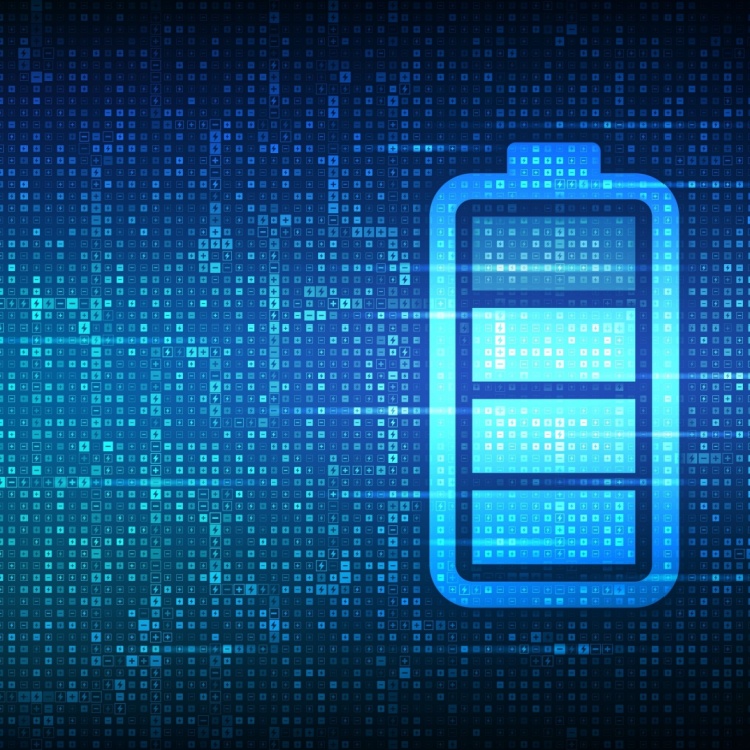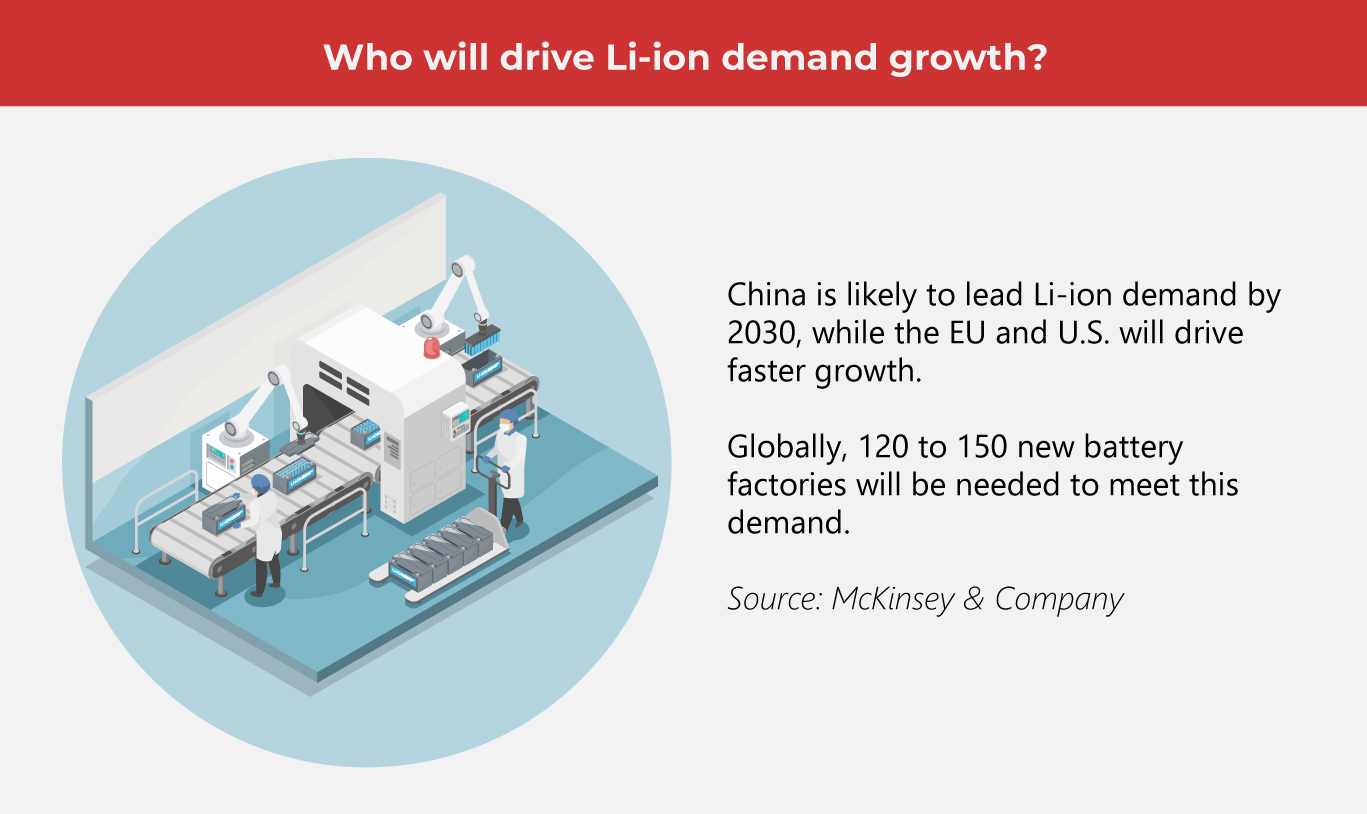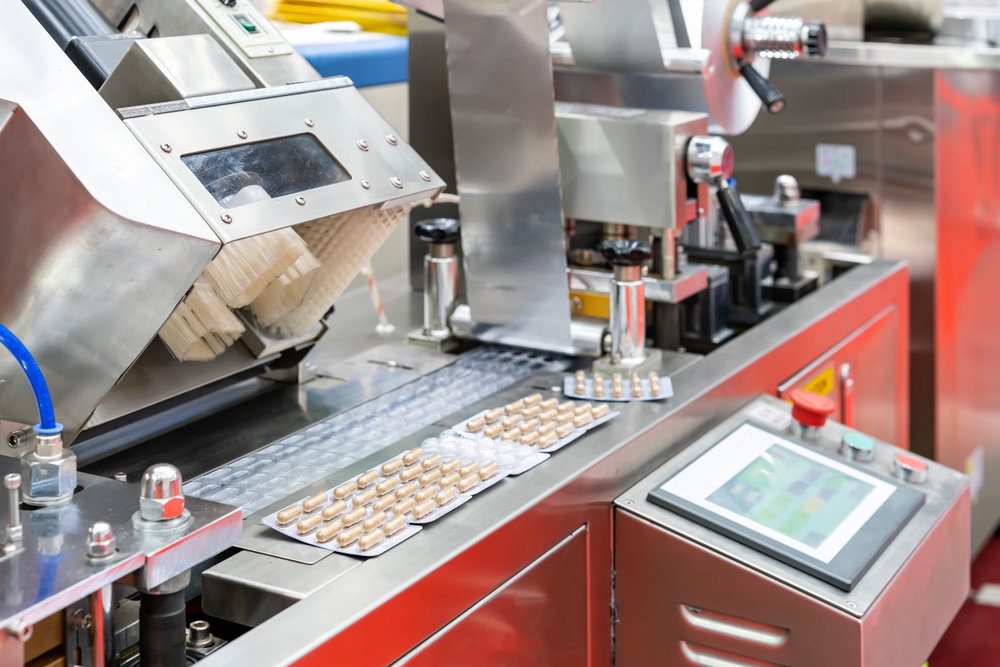Top 7 EV Battery Trends Through 2030

The automotive market is evolving as global electric vehicle (EV) sales slowed in 2024, yet experts predict significant growth. Global battery sales are expected to quadruple 2023 levels by 2030, with battery value chain revenues projected to grow from $85 billion in 2022 to over $400 billion by 2030.
The global demand for batteries is surging as electrification and advancements in the renewable energy market drive efforts to combat climate change.The lithium-ion battery market, encompassing everything from mining to recycling, is expected to grow over 30% annually, reaching a value exceeding $400 billion by 2030.
Batteries are a critical factor for Original Equipment Manufacturers (OEMs), including automotive parts suppliers, as they heavily influence costs and product performance. The ongoing evolution of battery chemistries, particularly within lithium-ion technology, is reshaping product strategies.
OEMs face key decisions, such as whether to develop batteries in-house or collaborate with external partners, which will significantly impact their roadmaps.
7 trends for the EV battery market
In the face of market volatility, leaders embrace innovative strategies to adapt. Consequently, we present our predictions for the EV battery market, some of which aim to improve operational efficiency and supply chain management.
-
Continued dominance of lithium-ion batteries
Lithium-ion batteries hold a commanding share in the EV market due to their high energy density, long lifespan, and declining costs. Advances in material testing have further improved their performance and safety. Combined with established supply chains and recycling innovations, these batteries remain the automakers’ preference.
-
NMC and LFP as prevalent battery chemistries
Lithium-iron phosphate (LFP) and nickel manganese cobalt (NMC) chemistries will remain dominant due to their performance, cost-effectiveness, and supplier quality. LFP excels in energy density and developed supply chains, while NMC evolves with low-cobalt variants. Constant breakthroughs ensure both chemistries remain reliable solutions for the growing EV market.
-
Increased affordability and efficiency of lithium-ion technology
Advancements in the lithium-ion technology stack are driving performance and cost improvements. Developments like cell-to-chassis integration, dry electrode manufacturing, and AI-powered battery management systems enhance efficiency and longevity. OEMs focus on testing these breakthroughs to optimize production, reduce costs, and deliver reliable batteries.
-
Commercialization of emerging technologies
Recent news about the manufacturing industry highlights advancements in solid-state and sodium-ion batteries. Solid-state offers higher energy density and safety but may take three to four years for commercialization. Sodium-ion cells promise lower costs and better safety, with progress seen in prototypes, though adoption depends on LFP improvements.
-
Innovation gives companies a competitive edge
Several companies and research institutions are driving next-gen battery innovations. Tesla's gigafactories, along with QuantumScape and Solid Power, Inc.'s solid-state technologies, are at the forefront. Collaboration with academia and government funding supports advancements. These efforts align with environmental indicators, accelerating the shift to cleaner energy.
-
Boosted energy densities and battery longevity
By 2030, battery energy density is expected to exceed 400 Watt-hours per kilogram (Wh/kg), offering faster charging and improved efficiency. Longer battery lifespan, with some lasting over 1 million miles, will enhance sustainability. Advanced thermal analysis will be key in optimizing these environmentally friendly energy storage solutions.
-
Widespread adoption of recycling
Recycling of EV batteries is expected to grow as the availability of raw materials increases. New global regulations on collection, recycling, and recycled content will drive this growth, aligning with a product life profile that emphasizes sustainability. This approach will support a circular economy, reducing environmental impact.
Essential actions for OEMs
As EV battery trends evolve, OEMs need to adjust to new technologies while considering social indicators that impact consumer needs and environmental concerns.
-
Align battery strategy with the product and corporate goals.
Battery technology choices for OEMs have become more complex. As technologies evolve, OEMs must stay updated on the changing battery landscape and customer preferences. Strategies should align with product roadmaps, supply chains, and vertical integration.
-
Adopt new technologies with the appropriate approach.
Some companies develop battery designs in-house, reducing dependency on external partners and improving cost control and procurement efficiency. Others rely on external sourcing, partnering with established players or startups with innovative technologies. Strategies differ among companies, with decisions based on economic, operational, and security factors to determine the best path forward for adopting new technologies.
-
Strengthen resilience.
EV OEMs are facing significant disruptions that impact the return on their large investments, particularly in battery technology. With rapidly evolving technologies like silicon anodes and varying battery costs, OEMs must adapt by creating flexible strategies that balance commitment and adaptability. Battery cell manufacturers need to carefully plan investments, seek external funding, and optimize production lines to remain agile while embracing emerging technologies to stay competitive.
-
Fortify supply chain management.
Battery growth offers environmental benefits, but challenges remain, such as securing raw materials, equipment, and skilled labor. To address this, manufacturers must invest strategically, optimize production, and commit to sustainability. Long-term contracts and collaboration can ease supply chain issues. Renewable raw materials with low CO2 footprints are in demand, and companies must adapt and communicate long-term demand to ensure industry growth and stability.
-
Highlight Environmental, Social, and Governance (ESG) in manufacturing.
The global battery value chain faces ESG challenges, including environmental damage from material extraction, toxic waste, and improper disposal. Social issues like labor law violations and indigenous rights abuse arise, particularly in emerging markets, while governance concerns include corruption and unethical practices. To address these, manufacturers must embrace sustainable practices through collaboration, regulation, and transparency.
-
Build a circular value chain.
The battery industry must transition from a linear model to a circular value chain, focusing on repairing, reusing, and recycling materials. This shift offers significant economic opportunities, like scrap recycling, but requires cross-industry collaboration. Companies should explore cost-effective solutions and adopt new technologies to enhance circularity. While battery recycling remains small today, it’s expected to expand substantially after 2030.
The EV battery market is on the brink of transformative growth, driven by surging demand and technological innovation. By embracing partnerships and green practices, the industry can navigate challenges and build a cleaner, more efficient future.
As one of the Top 20 EMS companies in the world, IMI has over 40 years of experience in providing electronics manufacturing and technology solutions.
We are ready to support your business on a global scale.
Our proven technical expertise, worldwide reach, and vast experience in high-growth and emerging markets make us the ideal global manufacturing solutions partner.
Let's work together to build our future today.
Other Blog




